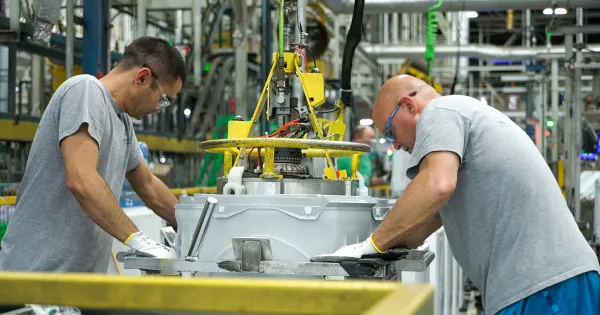The Importance of Employee Recognition

Employee recognition is key for effective HR management and organizational success. Acknowledging employees’ efforts is vital, as it enhances company culture, engagement, retention, and overall performance.
We will discuss the importance of employee recognition, its impact, and strategies for creating effective programs. We will also address common challenges and offer practical solutions.
The Impact of Employee Recognition

Employee recognition is more than just an occasional pat on the back; it is a systematic approach that drives engagement and performance. It influences several aspects of the work environment, including:
- Employee Motivation: Recognition is a powerful motivator. When employees feel valued, they are more likely to be motivated to perform better. They understand that their contributions are appreciated, leading to increased morale and enthusiasm.
- Engagement and Productivity: Recognized employees are more engaged. They connect emotionally with their work and the organization, resulting in higher productivity levels. Research shows that engaged employees are 17% more productive than their non-engaged counterparts.
- Retention Rates: In a competitive job market, retaining talent is vital. Organizations with effective recognition programs see reduced turnover rates. Employees who feel acknowledged are more loyal and less likely to seek opportunities elsewhere.
- Company Culture: Recognition contributes significantly to shaping a positive company culture. It encourages an environment of appreciation, respect, and collaboration. When employees see others being recognized, it sets a standard and encourages everyone to strive for excellence.
Employee recognition's impact extends beyond the individual. It influences the overall team dynamics and organizational success. A positive recognition culture attracts top talent and reinforces the company's reputation as a great place to work.
Types of Employee Recognition

To effectively implement employee recognition, it’s essential to understand the various types available. Recognition can be formal, informal, monetary, or non-monetary, and each has its significance in reinforcing positive behaviors and achievements.
Formal Recognition
This type of recognition is structured and often part of an organization’s policy. It includes awards, certificates, and public acknowledgment during company meetings. Examples include:
- Employee of the Month Awards: A classic method where outstanding performance is recognized monthly.
- Annual Awards Ceremonies: Celebrating long-term achievements or exceptional projects through official events.
- Performance Bonuses: Providing financial rewards for meeting or exceeding goals.
Formal recognition is effective in creating a sense of prestige and accomplishment among employees. It gives them a sense of pride and belonging within the organization.
Informal Recognition
Informal recognition is more spontaneous and occurs on a day-to-day basis. It can be as simple as a manager personally thanking an employee for their hard work or a peer appreciating a colleague’s help. Examples include:
- Verbal Praise: Simple words of appreciation can significantly boost morale.
- Notes of Thanks: Written messages, whether handwritten or via email, can leave a lasting impact.
- Social Media Shoutouts: Acknowledging employee contributions on social media platforms enhances visibility and shows that the company values public recognition.
Informal recognition is important as it reinforces positive behavior in real-time, making employees feel appreciated continuously rather than waiting for formal events.
Monetary and Non-Monetary Recognition
While monetary recognition, such as bonuses and gift cards, is effective, non-monetary recognition like career development opportunities, flexible working hours, and additional leave days also plays a significant role. Examples include:
- Professional Development: Offering training programs or courses to employees as a reward for their contributions.
- Wellness Programs: Providing wellness benefits like gym memberships or mental health support.
- Flexible Work Arrangements: Allowing remote work or flexible schedules as a form of appreciation.
Both monetary and non-monetary recognitions cater to different employee preferences and provide a balanced approach that appeals to a broader range of staff members.
Benefits of Employee Recognition

Employee recognition has several tangible and intangible benefits for both employees and organizations. These benefits contribute to a healthier work environment, improved performance, and better business outcomes.
Boosts Employee Engagement
Recognition programs have a direct impact on employee engagement. When employees feel valued, they are more likely to be committed to their work and the organization’s goals. Engaged employees take ownership of their responsibilities, go the extra mile, and become advocates for the organization.
Studies show that companies with high levels of employee engagement are more profitable. According to Gallup, organizations with engaged employees see a 21% increase in profitability. This demonstrates that recognition is not just an HR practice but a strategic business initiative.
Increases Employee Retention
Employee turnover can be costly, both financially and in terms of lost productivity. Recognition plays an important role in reducing turnover rates by encouraging loyalty and satisfaction. When employees feel appreciated, they are less likely to leave. This reduces hiring and training costs and retains institutional knowledge, which is invaluable for the organization’s growth.
Improves Productivity and Performance
Recognition leads to higher productivity. When employees know their efforts will be acknowledged, they are motivated to perform better. This creates a culture of excellence where individuals and teams strive to achieve their best. Recognition not only enhances individual performance but also drives team performance, encouraging collaboration and collective achievement.
Enhances Company Culture
A culture of recognition contributes to a positive and inclusive work environment. It creates a sense of community where employees support and celebrate each other’s successes. This inclusive culture attracts new talent, as job seekers often look for companies where their contributions will be valued.
Increases Employee Satisfaction and Well-being
Beyond professional satisfaction, recognition also boosts employee well-being. Employees who feel appreciated experience lower stress levels and higher job satisfaction. This, in turn, reduces absenteeism and burnout, allowing for a healthier and more productive workforce.
Implementing an Effective Employee Recognition Program

Creating a successful employee recognition program requires careful planning and a deep understanding of organizational culture. Here are some essential steps for implementing an effective recognition program:
Define Clear Objectives
Before launching a recognition program, it’s crucial to establish its objectives. What behaviors and achievements does the organization want to promote? Defining these clearly helps tailor the recognition program to meet organizational goals.
Incorporate a Variety of Recognition Methods
A successful program should incorporate both formal and informal, as well as monetary and non-monetary, recognition methods. This ensures that different employee preferences and motivations are catered to. A well-rounded approach maximizes the program’s impact across the workforce.
Ensure Inclusivity
An effective recognition program should be inclusive, ensuring that all employees, regardless of role or department, have an equal opportunity to be recognized. Avoid focusing only on high-performers; acknowledging efforts at all levels promotes a more inclusive culture.
Encourage Peer-to-Peer Recognition
Peer-to-peer recognition is often overlooked but can be very powerful. When colleagues appreciate each other’s efforts, it builds a sense of camaraderie and teamwork. Incorporating a platform for employees to recognize each other can enhance this dynamic.
Measure and Adjust the Program Regularly
To ensure the recognition program remains effective, it is essential to measure its success through employee feedback, engagement surveys, and performance metrics. Regular evaluation allows organizations to adjust the program as needed, ensuring it continues to meet its objectives.
Overcoming Challenges in Employee Recognition

While the benefits of employee recognition are clear, many organizations face challenges in effectively implementing these programs. Common obstacles include:
Lack of Budget
Some companies struggle with allocating a budget for recognition programs. However, it’s important to note that recognition doesn’t always have to be expensive. Non-monetary and informal recognition methods, such as verbal praise or career development opportunities, can be just as effective.
Inconsistent Application
Another challenge is the inconsistent application of recognition practices. This can lead to feelings of favoritism or unfairness among employees. To overcome this, organizations should set clear guidelines for recognition and train managers to apply these consistently.
Cultural Barriers
In some organizations, especially those with diverse or global teams, cultural differences may affect how recognition is perceived. For instance, while some employees appreciate public praise, others may find it uncomfortable. Understanding cultural nuances and providing options for different forms of recognition can help overcome this challenge.
Lack of Manager Engagement
Managers play a crucial role in recognizing employees. If they are not actively engaged in the recognition process, its effectiveness is diminished. Organizations should train managers on the importance of recognition and equip them with tools to recognize employees effectively.
Final Thoughts
Employee recognition is not merely a nice-to-have but a critical component of successful business management. It drives engagement, boosts productivity, reduces turnover, and enhances company culture. An effective employee recognition program requires a strategic approach that considers different forms of recognition and adapts to the unique needs of employees.
By overcoming challenges such as budget constraints, cultural differences, and inconsistent application, organizations can create a recognition culture that propels them toward success. Ultimately, when employees feel valued, they are motivated to contribute their best, creating a thriving and dynamic work environment.
Key Takeaways
| Section | Key Takeaways |
|---|---|
| Introduction | Recognition boosts motivation, engagement, and retention. |
| Impact | Improves motivation, productivity, and company culture. |
| Types | Includes formal (awards) and informal (praise) methods. |
| Benefits | Increases engagement, satisfaction, and reduces turnover. |
| Program Implementation | Set goals, use various methods, and review regularly. |
| Challenges | Use low-cost options, be consistent, and train managers. |
| Final Thoughts | Essential for a positive work culture and motivated employees. |





